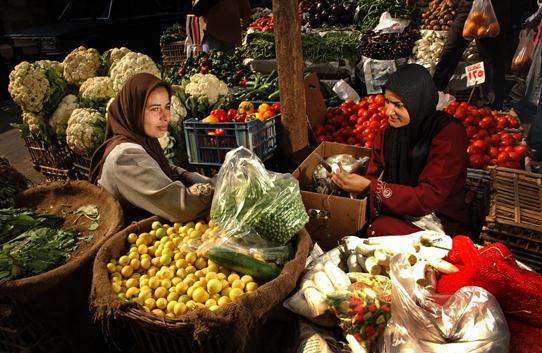New Publication: The changing state of agribusiness in the Southern and Eastern Mediterranean region

Countries in the southern and eastern Mediterranean (SEMED) region face significant and mounting food security challenges. The economic crisis in 2008 and political transformations over the past five years have put pressure on food systems, while natural resource constraints keep tightening due to climate change and population growth.
A new joint report, “The Agrifood sector in the Southern and Eastern Mediterranean: Key trends in Egypt, Morocco, Tunisia and Jordan” published by TCI and the European Bank for Reconstruction and Development (EBRD) provides insight into the food security situation in the region and points to a growing need for policy reforms, agricultural investment and introduction of technology and innovation to support evolving needs.
The report is a compilation of thematic notes on the four countries and the region, which features an analysis of food consumption patterns, production and trade, and agricultural policies. The findings highlight the importance of producing more food with fewer resources and adopting an updated approach to world and regional trade by leveraging comparative advantages.
Adapting to a changing environment
The population of the SEMED region is expected to increase dramatically -- by 20 percent -- in the next 15 years. Scarce water and natural resources will be spread even more thinly, and agriculture will have to adapt to the impacts of climate change while also producing more food to meet demand. Technology and innovations such as renewable energy, efficient irrigation systems, and conservation agriculture need to be incorporated into the sector to maximize limited resources.
Even if the region improves efficiency and closes its yield gap, domestic food supply will still not be able to meet the demands of a larger population. All of the SEMED and most of the surrounding countries with the exception of Turkey are net importers, and agricultural trade deficits are projected to rise as they have for the past decade. Cereals -- wheat in particular -- are the main source of calories in the region and therefore drive growth in agricultural trade deficits: for example Jordan imports 98 percent of its needs and Morocco, 40 percent.
“Increasing cereal production and productivity has been a top policy agenda item but this comes at some costs,” said Nuno Santos, Economist in the FAO Investment Centre. “Instead, countries could consider turning to higher value-added crops to increase the aggregate income generated by the agrifood sector, while adjusting subsidies to ensure they aren’t incentivizing unsustainable, low diet-quality food choices that exacerbate the region’s nutritional challenges. At different speeds, countries in the region have already taken steps in that direction.”
Shifting consumption patterns
As the population has grown, consumer incomes have increased as well, which has resulted in changing food preferences and consumption patterns -- and such a trend is expected to persist. The shift in demographics toward a more educated and urban population is impacting the markets for meat, dairy, oilseeds and sugar. Producers who adapt quickly can bring premium and value-added products to the market. There is also an opening for policymakers to step in and improve food safety and quality standards. This will contribute to satisfy changing domestic demands and help meet international requirements to open doors for future trade growth.
“Not only will countries in the region need to produce more food to feed a larger population, but they will need to accommodate the growing appeal of higher quality and a variety of food products.” said Iride Ceccacci, Food Security Economist at the EBRD. “This presents an opportunity to scale up investments to produce better quality food in a more efficient way, while at the same time respecting the environment. A dynamic, competitive and inclusive agribusiness industry, driven by private sector participation, can be a powerful force to promote sustainable growth in the SEMED region”.
The role of agriculture
In light of these developments in the sector, the joint EBRD-FAO publication also contextualizes agriculture’s significance, which varies across the SEMED region. Some countries, like Jordan and Tunisia, can be classified as “urbanized” while others, like Egypt and Morocco, are “transforming”. These labels refer to the significance of agriculture to GDP and also the country’s poverty patterns.
Agriculture’s contribution to GDP has been falling in both types of countries, but it still has an important role to play – especially as an employer. In Morocco and Egypt, 40 and 30 percent of employed people work in the agricultural sector, respectively. There are also opportunities for the government to encourage youth employment, which is one of the biggest challenges in the region, by providing access to relevant skills development and education in all stages along the agrifood chain.
Agriculture in the SEMED region is evolving. Climate change, changing consumption patterns, political transformations, and market gaps are all important factors that the report considers. By recognizing these current trends in agribusiness and food security, public officials can focus on policy reforms that will provide the right incentives to support sustainable growth, improve food security and attract private sector investment.
The publication is based on a collection of notes that was initially disseminated at the “Private Sector Forum on Food Security in the Southern and Eastern Mediterranean Region” jointly organized by FAO, EBRD and the Union for the Mediterranean (UfM) in Barcelona from 5-6 May 2015.
